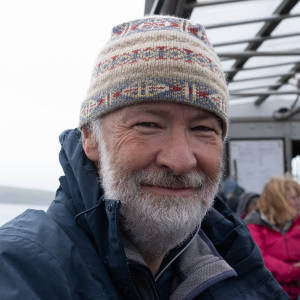Under Escort
The arrival of sea ice might have been good for polar bear spotting, but it also raised the question of what happened if it got too thick for our ships specification. The Akademik Ioffe is fine at 8/10 ice coverage, and just about OK at 9/10, but at any more than this there are problems.
The original plan was to sail down through Prince Regent Inlet, and through the tiny Bellot Strait into Franklin Strait. A few days ago we were told that this wasn’t going to be possible – there was just too much ice around the western end of the strait, and that we would need to revert to a Plan B. This was to go down Peel Sound to reach Franklin Strait, and then head towards Cambridge Bay for our flight south. Plan B looks more obvious to the naïve navigator (and is in fact the route that Amundsen used), but has the problem of being more prone to ice. The expedition staff were now checking ice charts on a regular basis trying to second guess where the ice was going to move next. So came Plan C, and a possible Plan D too. Plan C was to request icebreaker support from the Canadian Coastguard. Plan D was to rearrange the expeditions flying plan and to have us collected from the little town of Resolute instead of Cambridge Bay.
After an extended round of negotiations the message came through from Coastguard HQ in Ottawa, the CCGS Henry Larsen would be made available to escort us to Cambridge Bay. And in a final throw of the ice-dice it was decided that the plug of ice blocking the western end of Bellot Strait was showing signs of moving so we would be heading off to try that route.
For most of today we hurtled (in maritime terms) south down Prince Regent Inlet behind the Henry Larsen at 13 or 14 knots, with the Larsen’s helicopter flying regular sorties to check on the state of the ice ahead. Every now and again a batch of sea ice would appear to provide reassurance that the Henry Larsen might just be needed.
1122/3164

Comments
Sign in or get an account to comment.


